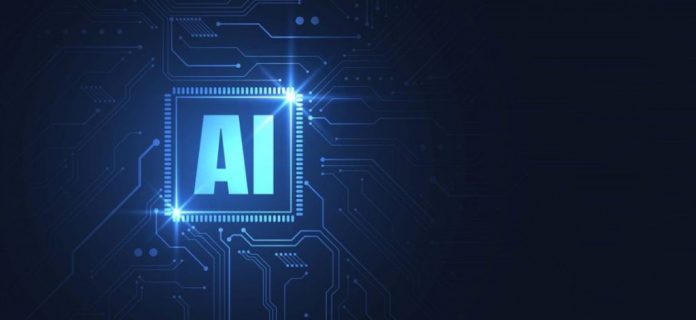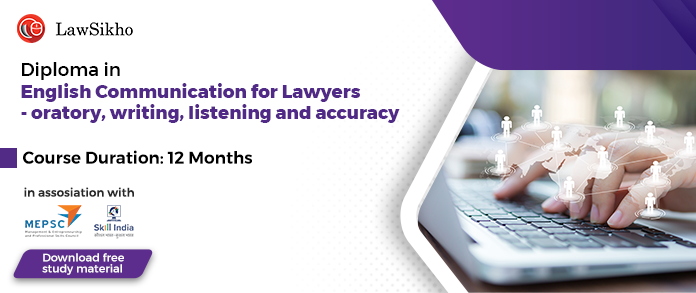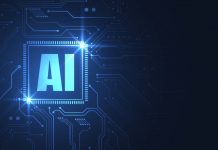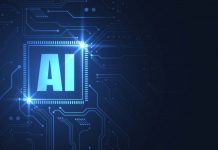This article is written by Yogita Sharma pursuing Diploma in Law Firm Practice: Research, Drafting, Briefing and Client Management
This article has been published by Sneha Mahawar.
Table of Contents
Introduction
“Can machines think?” was the question that attracted plenteous attention in the 1950s when Alan Turing published a seminal paper on artificial intelligence. Over the years, artificial intelligence has evolved tremendously. From the comfort of our homes to streets, transportation to commerce, agriculture to fitness, healthcare to education, business to finance, and telecommunications to biotechnology, AI is proving its decision-making capabilities everywhere. AI has become increasingly significant for inventions as well. From enabling inventions AI is penetrating across technologies, inventor-patentees, organizations, and geography.
Great technology comes with considerable challenges, and AI inventions are no exception. Subsequent growth in AI inventions and the protection of intellectual property has become a challenge for the well-established patent practices followed across the globe. AI has made inventing process quicker, cheaper, and unburdened with human bias. An increase in patenting activity, which led to low-quality patents, patent trolls, and patent flooding, are all results of efficiency brought in by AI in inventions. If AI can autonomously or semi-autonomously generate innovations at a low cost, then patent policies must be re-calibrated. The article will look into various aspects of patentability necessary for getting qualified for a patent and the challenges that AI inventions may face for it. It will also give a comparison of the patentability of AI inventions in various countries all around.
Patentability of AI inventions
With the advancement of AI and machine learning, machines have become essential contributors towards creation from merely being a tool of the invention. Through understanding complex data and learning from it, AI can also generate novel works which are generally associated with human ingenuity. A rise in AI inventions has instilled a stir in the traditional paradigm of patentability. The first step in getting an AI invention patented is applying for patent protection, which has many risks. The patent office will most likely reject the application for a patent if an invention only improves the working of the computer and doesn’t link to any practical application. We will now know more about the patentability aspect of an invention considered by patent offices.
What makes an invention Patentable
According to the TRIPS agreement and other national patent laws, an invention is required to fulfill the following necessary criteria to qualify for a grant of a patent-
Patentable Subject-Matter
An invention needs to meet standards set forth by patent laws to receive patent protection. The ineligible subject matter makes the patent application rejected.
Novelty
The invention should be new or novel and not already in existence.
Inventive step or non-obviousness
It makes it necessary for an invention to have an inventive step, mere changes in the prior art would not suffice. It should not be obvious to the person skilled in the art.
Industrial application
The invention should have some industrial utility to be used commercially and have some economic significance.
Issues in the patentability of AI inventions
To know about the patent eligibility of AI inventions, we will first look into major issues that have been raised worldwide with the increase in AI inventions.
Subject-matter eligibility
The subject matter of AI inventions becomes ineligible to get patent protection due to the strict laws applied by various countries.
Inventive Step
Inventive step gives importance to a person skilled in the art. But if AIs become more knowledgeable and skilled in the area, it is unclear how a human patent examiner would be able to assess the obviousness of an AI’s invention.
Ownership of AI patents
The national patent laws and the TRIPS agreement requires the inventor to be a legal person or a human being. AI is neither a legal person nor a human being. Thus, AI is struggling to become an inventor in a patent application. The issue has reached the doors of courts around the world. We will look into the opinion of the courts in the later part of this article.
We will now look at these issues in detail vis-a-vis the laws and practices of different countries.
Patentability of AI inventions in different countries
Treatment of AI inventions in different jurisdictions
Computer-implemented inventions or inventions involving AI are treated differently by patent offices in different regions of the world.
US
The U.S. patent law, 35 U.S.C. S/ 101 defines patent-eligible subject matter as including “any new and useful process, machine, manufacture, or composition of matter, or any new and useful improvement thereof”. It says that mathematical models and algorithms are non-patentable. Except the algorithm, if it has practical application, it is considered patentable.
Exceptions from patent- eligibility have been defined over the years by the courts, which comprise laws of nature, natural phenomena, and abstract ideas, latter is particularly relevant to computer-implemented inventions or AI inventions. In 2019, USPTO proposed a Revised Patent Subject-Matter Eligibility Guidance to conduct a subject-matter eligibility test for patentable inventions based on Alice Case guidelines referred to as the Alice test. In Alice Test, a claim directed to an abstract idea (mathematical concepts, methods of organizing human activity, and mental processes) may avoid exclusion if the claim recites that additional elements amount significantly more than the judicial exception.
EU
According to Article 52(2) (c) of the European Patent Convention (EPC), computer programs are excluded “as such” from patent protection. Most of the AI inventions include computer programs and get filtered from being patent eligible through this article of EPC. Besides, inventions involving software are not excluded from patentability as long as they have a technical character. Under Article 52(2) and (3) EPC, AI inventions not to be excluded from patentability. They must fulfill the patentability requirements of novelty, inventive step, and susceptibility of industrial application (Article 52(1) EPC). The technical character of the invention is significant when assessing whether these requirements are satisfied. If the AI invention has significant technical character, it can qualify for a grant of a patent under EPC.
Japan
According to Japan Patent Office (JPO), AI guidelines, with a minor modification in the algorithm using machine learning or deep learning to achieve a better result, are just viewed as a routine upgrade unless it shows that this method was never applied before. Thus, AI invention needs to show that method was unknown in all the prior art and that it is not just an improvement to get a patent application accepted in Japan.
India
In India, Section 3(k) of the Indian Patent Act, 1970 states, “mathematical or business method or a computer program per se or algorithms” are not inventions. There is an absolute ban on the patentability of algorithms and computer programs unless it produces a technical effect or technical contribution. AI invention should show a significant technical effect, for getting patent applications considered in India.
For example, the Indian Patent Application (IPA) 3323/CHENP/2012, in which a system and method to model and monitor an energy load had been granted a patent upon a demonstration of the technical effect of reducing the energy consumption of an air conditioning system.
In contrast, an application for a computer-related invention got rejected in IPA 8383/DELNP/2009 for a machine-to-machine communication platform that transfers medical data. Indian Patent Office was unconvinced by the technical effect provided by the applicant, who claimed that it was an efficient and secure method of aggregating electronic patient records.
Thus, the U.S. patent law gives more importance to the practical application to be tested by the subject matter eligibility test. On the other hand, EPC imparts significance to the technical character of AI inventions akin to the technical effect given priority in India.
Ascertaining the “inventor” in AI inventions : the DABUS case study
U.S. scientist and technologist Dr. Stephen Thaler has been bidding in various jurisdictions around the world to register patents for the inventions he claims developed by an AI system created by him. In his patent applications, Thaler has named his ‘DABUS’ ( Device for the Autonomous Bootstrapping of Unified Sentience) system as an inventor, arguing that patent law supports the concept of AI inventorship. Thaler’s claims have challenged the traditional understanding that invention is something only people are capable of, not machines. He went to different courts and offices around the globe for his claim to register the invention of DABUS.
The US Patent Office ruled in 2020 that Thaler’s AI system DABUS, could not be a legal inventor because it was not a “natural person.” The US Patent Act defines an inventor as “the individual or, if a joint invention, the individuals collectively who invented or discovered the subject matter of invention.
The US Patent Act does not define an “individual.” Though, a Supreme Court decision (Univ. of Utah v. Max-Planck-Gesellschaft) held that, concerning text associated with a different statute, that an “individual” to be ordinarily understood a human being. The Federal Circuit concluded that in passing the Patent Act, “Congress has determined that only a natural person can be an inventor, so AI cannot be.”
In 2019, the European Patent Office (EPO) refused the application made by Dr. Thaler on the ground that the EPC requires the inventor to be a natural person. Dr. Thaler filed appeals later dismissed by the EPO Legal Board of Appeal in oral proceedings in December last year. The Legal Board of Appeal confirmed that under the EPC, the inventor had to be a person with legal capacity and that a statement indicating the origin of the right to the European patent must demonstrate the inventor’s successor in life.
The Court of Appeal in London previously ruled (in the case of Stephen Thaler and Comptroller General of Patents, Trademarks, and Designs) that under UK law, AI systems cannot own or transfer patent rights.UK policymakers later considered implementing a new form of intellectual property rights to ensure UK IP law strikes the appropriate balance to encourage the development of AI and its use across the UK economy.
Germany’s Federal Patent Court precludes Artificial Intelligence generated inventions from patent protection except when a human is named the inventor in the patent application. It held that the named inventor in a patent application must be a natural person, but the AI supposedly responsible for the underlying invention can be named additionally.
The five-judge bench of the Australian Federal Court in “Commissioner of Patents V. Thaler” held that only a natural person, such as a business or an individual, could be an inventor under Australia’s Patents Act and Patent Regulations. The outcome of the ruling is that AI systems cannot list as inventors on patent applications in Australia. At the same time, the Court said its judgment does not exclude the possibility that inventions devised by AI systems are capable of granting patents.
In contrast to all the jurisdictions, South Africa’s Patent Office has become the only patent office to grant the first patent for an invention developed by AI inventor DABUS. South Africa does not have a substantive patent examination system, and its laws do not define an inventor. Thus, the significance of acceptance may be little weighing up to other jurisdictions.
The requirement of a natural person to be named as a patent inventor has restricted DABUS from inventorship. Various issues have grown around this question of inventorship, and more will be there in the future that will require amendments to the laws of these countries. Countries can come together and collaborate to find the solution to such issues.
AI inventions and international organizations
Cooperation between various countries is desirable to solve the issues concerning AI inventions. One such example is the interdisciplinary IP5 task force. In this task force, IP5 partner offices ( the EPO, JPO, KIPO, CNIPA, and USPTO) and WIPO are exploring legal, technical, and policy aspects of new technologies and AI, their impact on patent systems and operations at the five offices. This task force has advanced its cooperation in new technologies and artificial intelligence and coordinated its initiatives.
There has been close cooperation between EPO and China since 2019 in the area of new emerging technologies and AI-related innovation. They jointly conducted a comparative study on software-related inventions providing applicants and practitioners with insights into their respective examination practices.
WIPO has also launched a public consultation process on AI and IP policy, inviting feedback on the questions likely to face IP policymakers about AI. These might form the basis for future structured discussions. WIPO also held a Conversation on IP and AI, bringing together member states and other stakeholders to discuss the impact of AI on IP policy and to collectively formulate the questions that policymakers need to ask.
Similar consultations and conversations are needed to answer multiple questions imminent with the evolution of AI inventions and IP frameworks.
Conclusion
In conclusion, patenting an AI invention is a complex process from subject matter to inventive step to ownership every criterion is looked into and resolved separately. Several countries and organizations have issued specific guidance on AI patenting, but many more are yet to do so. More collaborations among nations are needed to formulate a holistic policy that could remove vulnerabilities of present legal regimes. The above comparison of different aspects of patentability of various countries shows that most of them had focused on the eligibility of AI inventions based on their old laws that need amendment considering the current time. Considering the significance of AI-generated innovations, patent law institutions and offices must seek a more advanced and easy way of granting patent rights to the invention produced by an artificially intelligent system. It is possible by joint coordination wherein technical, legal, and strategic aspects of modern technologies, AI, and the patent system can be expounded and harmonized as much as possible. As rightly pointed out by UKIPO, “ Any measure we put in place should: encourage innovation in AI technology and promote its use for the public good; preserve the central role of intellectual property in promoting human creativity and innovation; be based on the best available economic evidence.”
References
- https://caldwellip.com/2021/01/28/recent-artificial-intelligence-patent-trends/
- https://www.patentnext.com/2021/03/how-the-courts-treat-artificial-intelligence-ai-patent-inventions-through-the-years-since-alice/
- https://cameronintellectualproperty.com/ai-patentability-in-europe-us-your-chances-before-epo-uspto/
- https://www.pinsentmasons.com/out-law/news/ai-inventor-rejected-australian-patent-ruling
- https://www.pinsentmasons.com/out-law/news/uk-considers-new-ip-right-for-ai
- https://www.cliffordchance.com/expertise/services/litigation_dispute_resolution/intellectual_property/global-ip-updates/2022/q2/epo-denies-ai-inventorship.html
- https://www.pinsentmasons.com/out-law/news/german-court-considers-ai-generated-inventions
- https://www.brookings.edu/blog/techtank/2022/08/25/patents-and-ai-inventions-recent-court-rulings-and-broader-policy-questions/
- https://www.law.com/2022/04/05/patentability-of-inventions-involving-ai-in-health-care-is-becoming-a-key-and-complex-issue/?slreturn=20220719050100
- https://www.epo.org/news-events/in-focus/ict/artificial-intelligence.html
- https://metacept.com/patentability-of-artificial-intelligence-generated-inventions/
- https://www.barandbench.com/view-point/a-future-proof-ipo-patenting-ai-inventions-in-india
Students of Lawsikho courses regularly produce writing assignments and work on practical exercises as a part of their coursework and develop themselves in real-life practical skills.
LawSikho has created a telegram group for exchanging legal knowledge, referrals, and various opportunities. You can click on this link and join:
Follow us on Instagram and subscribe to our YouTube channel for more amazing legal content.
 Serato DJ Crack 2025Serato DJ PRO Crack
Serato DJ Crack 2025Serato DJ PRO Crack













 Allow notifications
Allow notifications


